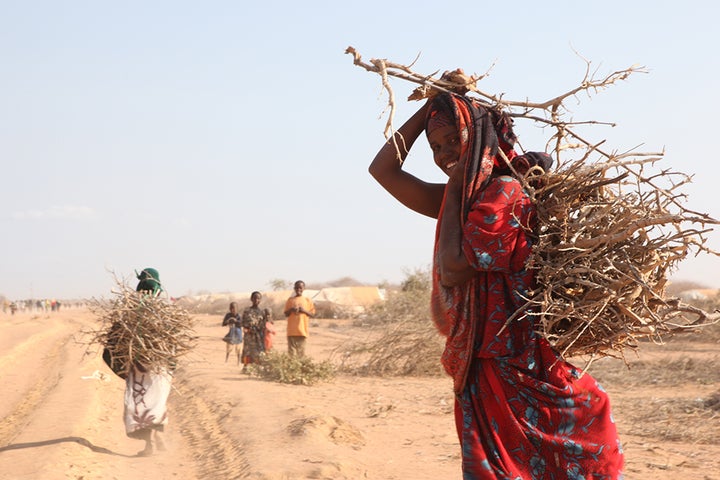
Today is World Day to Combat Desertification and Drought, acknowledging that desertification and drought are global problems and that joint action by the international community is needed to combat them, particularly in Africa.
de·sert·i·fi·ca·tion
dəˌzərdəfəˈkāSH(ə)n/
noun
The process by which fertile land becomes desert, typically as a result of drought, deforestation, or inappropriate agriculture.
My family moved to the Willamette Valley part of Oregon when I was in the 9th grade. It was largely an agricultural area with grasses and hay, grains and berries. It was a common practice to burn the remaining roots and stubble after crops had been harvested. It would become dry and they would clear it for the next planting season.
Top agriculture experts determined that when they did this, productivity and outputs were greatly reduced. The topsoil was exposed to weather conditions and when storms blew through, there was nothing to hold the nutrient rich soil in place. After a few years, the condition for healthy growth was depleted. These practices were also harmful to the environment and affected the air quality of local residents.
According to the Oregon Seed Council, currently only 15,000 acres of Oregon’s grass seed fields are burned for thermal sanitation. Smoke impacts, carefully measured by the Oregon Department of Agriculture, are extremely limited. Oregon farmers have diligently abided by regulations and followed a strict burning permit process. A permanent ban will hinder or eliminate their ability to farm. The Department of Environmental Quality already has statutory authority to reduce acres burned if economic alternatives exist or if public health is threatened.
However, farmers found that when roots and stubble get plowed back into the soil it decomposes, becomes a natural fertilizer and holds the soil in place for the next harvest preserving the nutrients.
Many of our African contexts have found the same to be true in their agricultural process. Africa is home to over 30 percent of the world’s natural resources, but produces only three percent of the world’s gross domestic product. Just as it was in Oregon for a time, it was also their common practice to burn roots off, but in working with our field staff and agriculture experts, we’ve been able to train farmers in a more productive way to farm with better results, therefore combating the process of desertification in vulnerable regions.
Food for the Hungry currently teaches the principals of Foundations in Farming in several of our African communities, and we have seen divine results. Based on the proven techniques of conservation agriculture, this program uses scientifically sound agricultural techniques combined with strong biblical teaching to radically transform farming practices and bring hope to farmers.
When we faithfully apply these principles, the yields have been up to 10 times more than with traditional farming practices. These practices are not revolutionary. They are the basis and the beginning of a deeper theological ideology around the faithfulness of God’s people. This core principle is what makes Food for the Hungry’s implementation of Foundations for Farming self- sustainable, long-lasting and holistic.
The following core principles of Foundations of Farming observe how crops and plants are able to thrive in an organic environment and then replicate what God is showing us on our own land.
● No Burning: The common African practice of burning destroys the soil.
● Animal manure: Use animal manure instead of chemicals. Animal manure is balanced and has the best acidity for plants. With chemicals, plants grow too quickly, but with manure, they grow at their own pace and yield better results.
● No tilling: The practice of plowing destroys soil structure, including the micro-organisms that live in the soil, leading to erosion and rapid water loss.
● Plant at the right time: It has been the common practice to plant at the same time every year, according to the calendar. We’re encouraging farmers to ignore the calendar. Climate change has caused a shift and now farmers need to be more in tune with environmental cues. They should plant after the first rain comes.
● Mulch: Mulch provides a permanent organic cover. In creation we observe that God does not leave the soil bare, so we know that covering the crops with protective mulch can:
o Stop soil erosion
o Improve water filtration of the soil
o Minimize evaporation of water from the soil
o Add organic matter, improving fertility
● Faithful Weeding: The weeds deplete nutrients that should be reserved for crops. Farmers should identify weeds early on in the process and begin the removal process.
This process, along with training on the supply chain and how to get their crops to markets that is in demand, helped farmers turn an abundance of produce into a way to support their families and rise out of poverty. I can’t think of a better metaphor to represent the transformation of vulnerable communities than that of dry deserts returning to their rich, savannah lands of bountiful soil. What a beautiful image of the restoration we long to see.
Then he told them many things in parables, saying: “A farmer went out to sow his seed. As he was scattering the seed, some fell along the path, and the birds came and ate it up. Some fell on rocky places, where it did not have much soil. It sprang up quickly, because the soil was shallow. But when the sun came up, the plants were scorched, and they withered because they had no root. Other seed fell among thorns, which grew up and choked the plants. Still other seed fell on good soil, where it produced a crop—a hundred, sixty or thirty times what was sown.”
-Matthew 13:3-8
